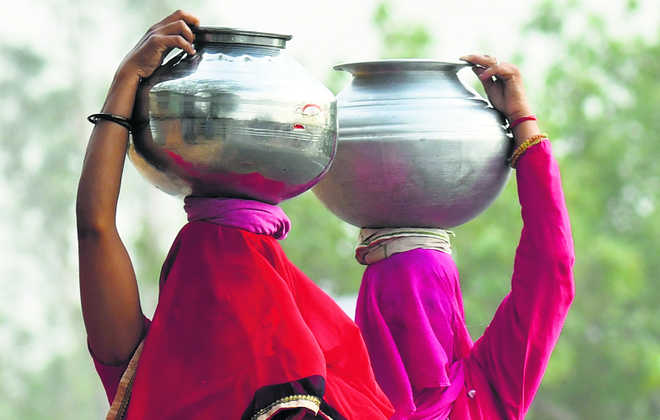SS Chahar
India with 940 girls for 1,000 boys is a daughter deficient and son surplus country. Haryana is the worst state with 877 girls (900 in 1966) for 1,000 boys. The birth rate of girl child has declined in 17 states, including Haryana, according to the NITI Aayog report, 2018.
Haryana strictly follows a patriarchal system where son holds the centre stage in the family. In 1966, the male-female birth ratio was 158,149 to 129,868 and in 2011 it was 296,328 to 248,292. Cases of female foeticide are on the rise and the state is not taking seriously the guidelines of the Supreme Court by not submitting the quarterly report of child birth along with the gender ratio. According to the Economic Survey of India 2018, the ratio of the last child born in the family in Haryana is 2,300 boys to 1,000 girls, against 2,100 boys in Gujarat, Punjab and Rajasthan. So, various schemes launched by successive governments, including ‘Beti Bachao Beto Padao’, could not check the practice meaningfully.
The literacy rate in Haryana is 76.64 per cent against the national rate of 65.74 per cent and the male-female ratio is 85.38 to 72.74. In 2011, there were 570 high or secondary schools for girls, 232 middle schools, and 143 primary schools. Now, there are 7,705 male and 68,002 female teachers compared to 29,650 male teachers and 10,767 women teachers in 1966. But still the enrolment of girls is much less than boys and the ratio of Scheduled Caste girls is the worst. Around 49.3 per cent girls drop out of schools before matriculation. In sports, the participation of girls is 4.2 per cent against the national average of 3.5 per cent.
The health status of women in Haryana is miserable. The state nutrition fact-sheet released by Chief Minister Manohar Lal Khattar on December 17, 2017, states that 71.1 per cent women (56.1 per cent in 2006) have anaemia. Around 55 per cent expectant mothers and 63.1 per cent not-pregnant women are anaemic. It is sad that 62.7 per cent girls in the age of 15 to 19 years are anaemic (49.3% girls are very weak) against 29.7 per cent boys. Only 25.6 per cent girls have average health. Moreover, the pre-natal health care is negligible. Female sterilisation is 17 times higher than men. The maternal mortality rate is 73 per lakh against 55 per lakh at the national level.
Haryana is infamous for crimes against women and its share in sexual crimes in India is 2.4 per cent, more than Punjab and Himachal. Around 32 per cent women are victims of spousal violence. Besides, 88 cases of child sex abuse, and 93 cases of rape had been registered every month since 2015. Haryana is fourth in the country with regard to gang-rape cases. As many as 28,839 cases of domestic violence, dowry death, rape, molestation have been registered in the last three years (maximum in Karnal and minimum in Jhajjar).
The work participation rate of women in Haryana is 28.8 per cent, much lower than Uttar Pradesh, Kerala, and West Bengal. About 12 per cent households are led by women and most of them are very poor, according to the Socio-Economic Census Report, 2015. Haryana was one of the states to oppose the idea of sharing of property with daughters in the Hindu Succession Act, 1956. The state Assembly passed a resolution in 1977 and later in 1979 to amend the Act but the Centre did not consider it. However, the amended Act 2005 is silent about Muslim women. Even now, 70 per cent agricultural land is owned by men. In government jobs, the share of women is 9 per cent, while in the corporate sector it is less than 3 per cent.
Women’s representation in politics in Haryana was 4.93 per cent in 1967 and 14.14 per cent in 2014. More active participation of women in politics can be the most effective instrument to remove inherent and deep-rooted inequalities and bias against them.
(The writer is former Director, Centre for Haryana Studies, MDU, Rohtak)
Unlock Exclusive Insights with The Tribune Premium
Take your experience further with Premium access.
Thought-provoking Opinions, Expert Analysis, In-depth Insights and other Member Only Benefits
Already a Member? Sign In Now











